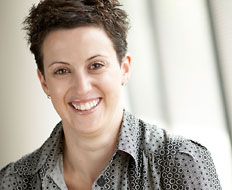The last seven years for U.S. quick serves have been a rollercoaster, to say the least. Economic fortune and rising sales peaked in 2007 before the bottom dropped out with the recession in 2008.
But the last seven years for McDonald’s Australia, vice president and director of communications Kristene Mullen says, have been an “amazing journey.”
“McDonald’s Australia is doing very well in these tough economic times, and I think it’s because of a combination of a number of things,” Mullen says.
“We’re always trying to improve our offerings to our customers, so we have to stay relevant, we have to stay front of mind, we have to make sure we’re providing a service to our customers that they feel comfortable with and that encourages them to keep coming to visit us.”
Though the brand has fed Aussies since the country’s first McDonald’s opened in Sydney in 1971, Mullen says the last seven years have been particularly significant as the chain has adopted sweeping changes to keep up with evolving customer demand.
Mullen says the company did some research and discovered that customers of McDonald’s in Australia wanted more choice, convenience, and comfort in the chain’s restaurants. McDonald’s answered the call with menu innovation, restaurant renovations, and the expansion of McCafé, a concept developed in 1993 in the Land Down Under that has made its way stateside recently.
“There’s a really strong coffee culture here in Australia,” Mullen says. “People often go to a café to catch up with friends or read the newspaper or just get away from the hustle and the bustle of the real world. Obviously, McDonald’s saw that there was a need to incorporate that into our business.”
Of the 808 McDonald’s restaurants in Australia, 608 of them now include an attached coffee shop, making McDonald’s the largest coffee chain in Australia.
The McCafé shops feature baked goods such as croissants, apple strudels, and cupcakes, to go along with Rain Forest Alliance coffee drinks.
“McCafé is still part of the McDonald’s footprint, but it brings in a different type of customer,” Mullen says, noting that free WiFi brings in a lot of businessmen, while young mothers often spend time there so the children have a place to play. “It’s a big focus for us, and has been for a long time.”
Menu innovations at McDonald’s Australia in the last seven years have been concentrated on healthy eating.
In February 2003, at the beginning of McDonald’s Australia’s seven-year facelift, the brand introduced an Alternative Happy Meal, which included a grilled cheese and tomato sandwich, fruit, and orange juice as opposed to the typical burger, fries, and soda. In September of that year, the Salads Plus line was launched, which included salads with less than 10 grams of fat per serving.
Since then, a host of healthier menu options has been launched, including Real Fruit Smoothies, Lean Beef Burgers, Deli Choice Rolls, and Pasta Zoo Happy Meals. Restaurants have also incorporated buns with 5 percent less sugar, a canola oil blend that is 75 percent lower in saturated fat than the previous blend, another oil that includes almost no trans fatty acids, and a Made to Order option for customers.
“We’ve also spent a lot of time behind the scenes talking to health ministers in each of our states, talking to dieticians,” Mullen says. “We have an organization called the Food Group Australia, which is a group of accredited dieticians that works very closely with our company to understand what some of the concerns are from the community and what some of the concerns are from our stakeholders, to make sure we’re providing some great options for our customers.”
McDonald’s has also worked with organizations such as Diabetes Australia, the Obesity Taskforce, and the Dieticians Association of Australia to better understand the health needs of its customers.
Nutrition labeling was adopted at all restaurants, and marketing efforts such as the Never Stop Playing and the Quick Service Restaurant Initiative for Responsible Advertising and Marketing Communication to Children initiatives were launched to promote healthy lifestyles among Australian children.
In February 2007, Tick Approved Meals were launched in conjunction with the Heart Foundation. The meals were menu options that had been approved by the Heart Foundation as being healthier because of smaller serving size and less saturated fat, salt, and vegetable/fiber content.
The work over the last seven years at McDonald’s Australia is certainly paying its dividends, as the brand continues to grow despite the global recession. In 2009, McDonald’s served about 1.56 million customers per day in Australia, an average of 100,000 more customers per week than in 2008.
Mullen says plans are in place to open about 30 stores each year for the next five years in the country.Each new store, she says, generates about 3,000 jobs in its host community, and the company now employs a total of 85,000 crewmembers in Australia.
Although Australians do not differ much from Americans in regards to tastes and preferences—Mullen says Big Macs and Quarter Pounders are still Aussies’ favorite menu items at McDonald’s—Australian trends and innovations are not simply adaptations of American trends. In fact, Mullen says, McDonald’s Australia works hard to deliver innovations that work for the brand globally.
“We have a lot of visitors that come out to our market every couple of months just to see what’s happening here in Australia,” she says. “We obviously share our ideas through conferences and meetings. It’s a great open line of communication here with what we’re doing, but also over in the U.S. Not only do we learn from the U.S., but they also learn from us, and that’s great.
“I guess that’s the power of our brand, as well.”











